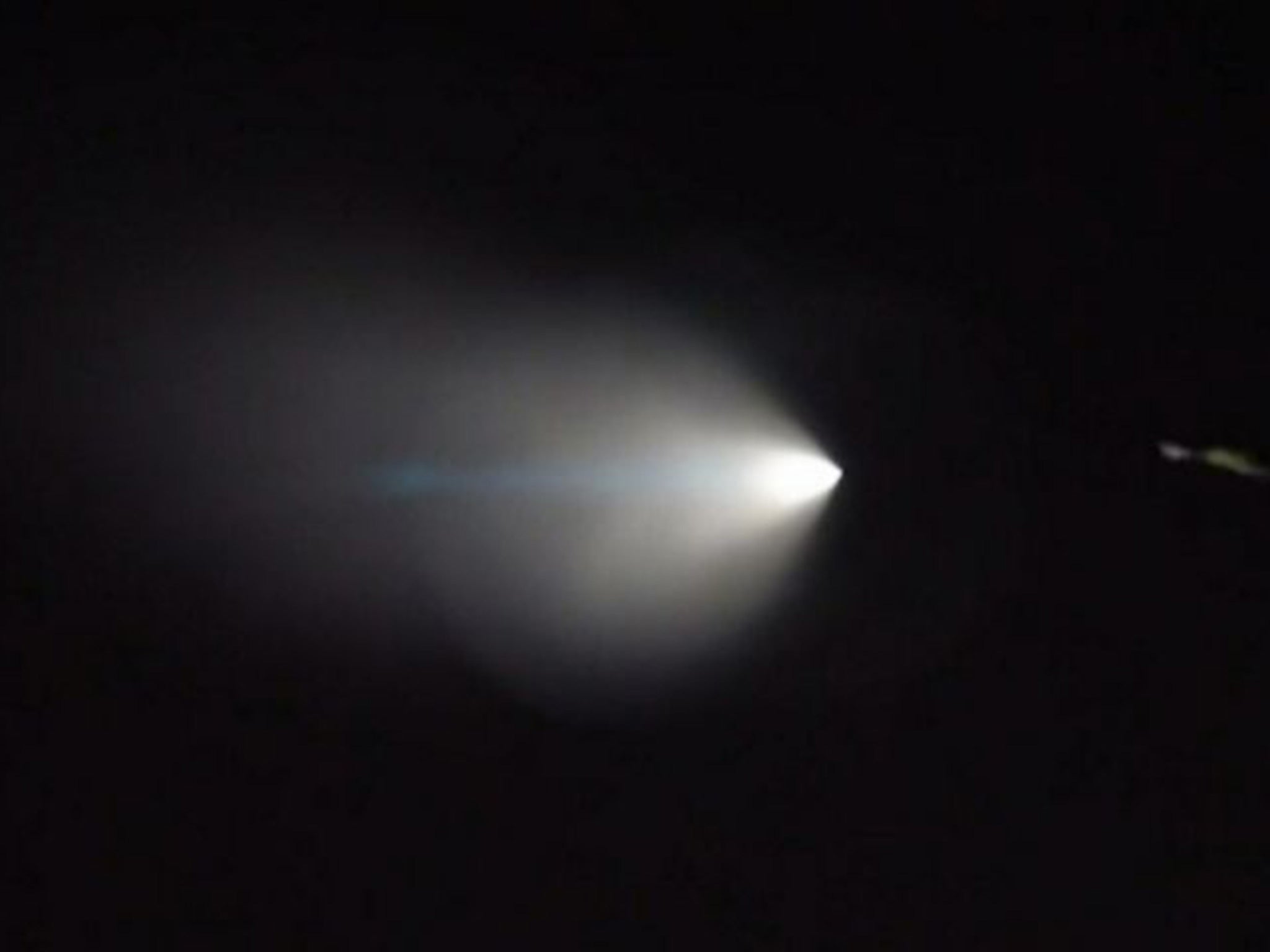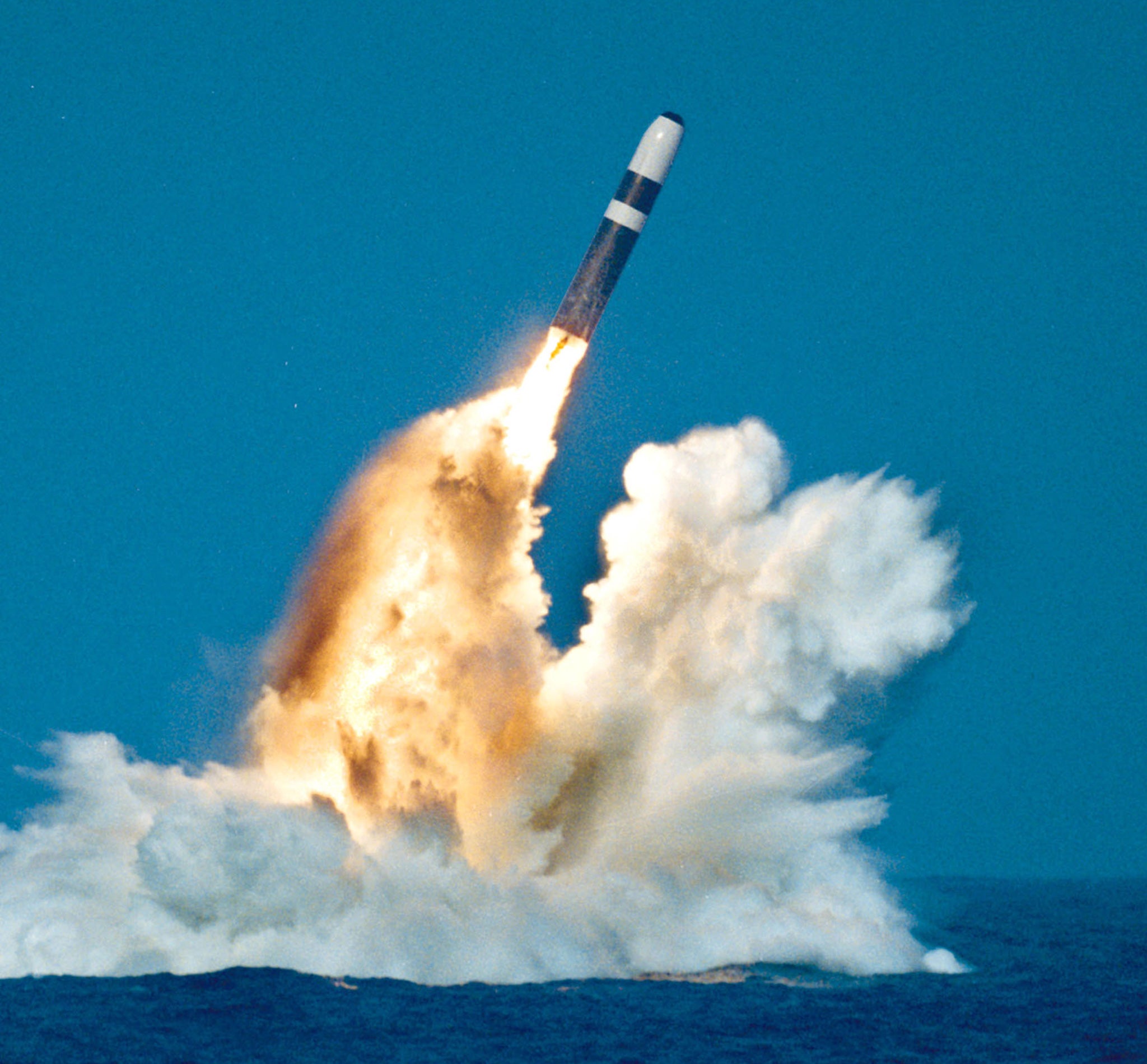Was the Californian missile test a social media nightmare or military muscle-flexing?
Thousands on the West Coast witnessed and documented an unarmed missile flying through the sky on Saturday night

Your support helps us to tell the story
From reproductive rights to climate change to Big Tech, The Independent is on the ground when the story is developing. Whether it's investigating the financials of Elon Musk's pro-Trump PAC or producing our latest documentary, 'The A Word', which shines a light on the American women fighting for reproductive rights, we know how important it is to parse out the facts from the messaging.
At such a critical moment in US history, we need reporters on the ground. Your donation allows us to keep sending journalists to speak to both sides of the story.
The Independent is trusted by Americans across the entire political spectrum. And unlike many other quality news outlets, we choose not to lock Americans out of our reporting and analysis with paywalls. We believe quality journalism should be available to everyone, paid for by those who can afford it.
Your support makes all the difference.There’s no longer any doubt that thousands of West Coasters witnessed an unarmed missile — and not a comet or an alien craft — streaking across the sky Saturday night.
What remains open to interpretation: Why?
Why test-fire a missile within sight of the nation’s second-largest city, terrifying some and leading thousands more to flood Twitter and Facebook with wild speculation about the glowing craft?
Did the Navy think the test would go largely unnoticed by the public? Did officials underestimate social media’s ability to turn a routine event into front-page fodder?
Or was that the plan all along, using the inevitable influence of social media to flex America’s military might for observers in Beijing and Moscow?
The answer: It’s complicated.
Loren Thompson, a military analyst who used to teach nuclear strategy at Georgetown University, told The Washington Post that the Navy finds itself in a tough position. Naval officials can’t make public pronouncements about their tests without risking more attention from foreign spies who are known to linger off the Pacific coast in foreign trawlers in hopes of monitoring military operations.
“However,” Thompson said on Monday, “I’m not sure the Navy realized that launching at night next to the L.A. Basin may have attracted such a huge audience. The launch was at about 6 p.m., but if it had occurred several hours earlier or later it would have been a much smaller audience.”
He added: “We have entered an era when anybody can reach a large audience using social media and the blogosphere, so the military needs to look closely at the implications of testing close to population centers.”
It’s not as if Saturday was the first time the Navy has tested the Trident 11 D5 missile, a 44-foot-long weapon deployed from an Ohio-class submarine that has range of 4,000 nautical miles. Since 1989, the weapon has been successfully flight-tested 156 times, according to figures provided to The Washington Post by Lockheed Martin.
But even a routine launch can feel “exotic” and “scary” to first-time observers, Thompson said.
On Monday, the Navy released a statement saying it had conducted a second Trident II (D5) missile test flight at sea. Both missiles, the statement noted, were launched from the Pacific Test Range off the southern California coast and landed “in the Eastern Missile Range near Kwajalein.”
According to John Daniels, a public affairs officer for the Navy’s strategic systems programs, Thompson may be onto something about the unexpected attention. Launches that occur during daylight hours resemble a rocket shooting skyward. At night, observers might briefly see a streaking fireball emanating from the rocket engine.
Saturday’s test, Daniels said, occurred during unique conditions: On an exceptionally clear evening, with the sun disappearing on the horizon at just the right time.
The Navy has performed similar launches many times, Daniels said, but never with effects so visible that they caught people’s attention from San Francisco to Arizona.
“That big, blueish green hue that everyone saw was a result of just that time of day,” Daniels said, noting that the fading sunlight was reflected from the rocket’s motor. “Had we done it earlier in the day or later in evening you would have still seen the missile, but probably not the same way.”
He added: “Normally, it would have gone up towards the atmosphere for 90 seconds before disappearing. But this time caused a big bloom in the sky.”
On Facebook, California state Senator Mike McGuire wrote: “Anybody else see the big white ball of light in the sky? … Wow.”
The Trident II is a three-stage rocket, meaning that the missile’s engine separates three times during flight. Daniels said the reflected sunlight was particularly pronounced during each engine separation, giving the rocket a mysterious glow from certain vantage points on the ground.
“Obviously, with something as large as a Trident II missile, whether you launch during the daytime or at night, it will be visible,” he said. “That’s just the nature of it.”
Even so, the extra attention might not have mattered to military officials, Thompson said. If you ignore the frenzy on social media, there is a benefit to visibility: The U.S. Navy, Thompson writes in Forbes, views nuclear deterrence as its most important mission, and the Trident is the backbone of that deterrence.
“It’s hard to overstate how important the Trident II D-5 missile that was tested is to national security,” he writes. “To put it bluntly, the D-5 may be the main reason why World War Three never happened. Effective defenses against a large-scale nuclear attack are extremely difficult to build, so the U.S. relies instead on the threat of retaliation to deter other countries from launching such an attack.”

The Navy’s Daniels didn’t entirely disagree.
Echoing previous statements made by the Navy, Daniels said the main purpose of the test was to ensure that the submarine’s weapons systems are functioning properly. The tests take place when a submarine is newly delivered or after a “midlife overhaul” and provide military analysts with troves of “performance data,” he said.
But, he noted, there’s another benefit to being seen.
“As a result of doing these operations, it does show any adversary that would wish to do us harm the capabilities that we have,” Daniels told The Post. “But the primary goal is to ensure readiness of a boat and crew who were ready to rejoin the fleet.”
In flexing its muscles, the Navy may have frightened America’s adversaries — but it also frightened many Californians.
Video blogger Julien Solomita told the Los Angeles Times that he was on a rooftop parking lot when he noticed “a bright circle of light in the sky.” He had a camera in his hands at the time, and as he trained it on the glowing light, he thought it looked like it was exploding, he said.
“For a brief moment, when the cloud got bigger, I was wondering, ‘Should we run?’” he said. “It looked so close.”
As others wondered whether he’d recorded a UFO or maybe a comet, Solomita told the Times that he wasn’t necessarily buying the Navy’s explanation.
“I’m kind of remaining skeptical because we were there, and it was crazy,” he said.
He added: “Why do a missile test over the second largest city in the U.S. and not tell anyone? That’s pretty wild.”
Next time, Thompson said, the Navy might want to take people like Solomita into greater consideration.
“You could have demonstrated same point to the Russians or the Chinese without getting people really concerned in L.A.,” Thompson told The Post. “I suspect the Navy underestimated the social media reaction they were going to get.”
Washington Post
Join our commenting forum
Join thought-provoking conversations, follow other Independent readers and see their replies
Comments